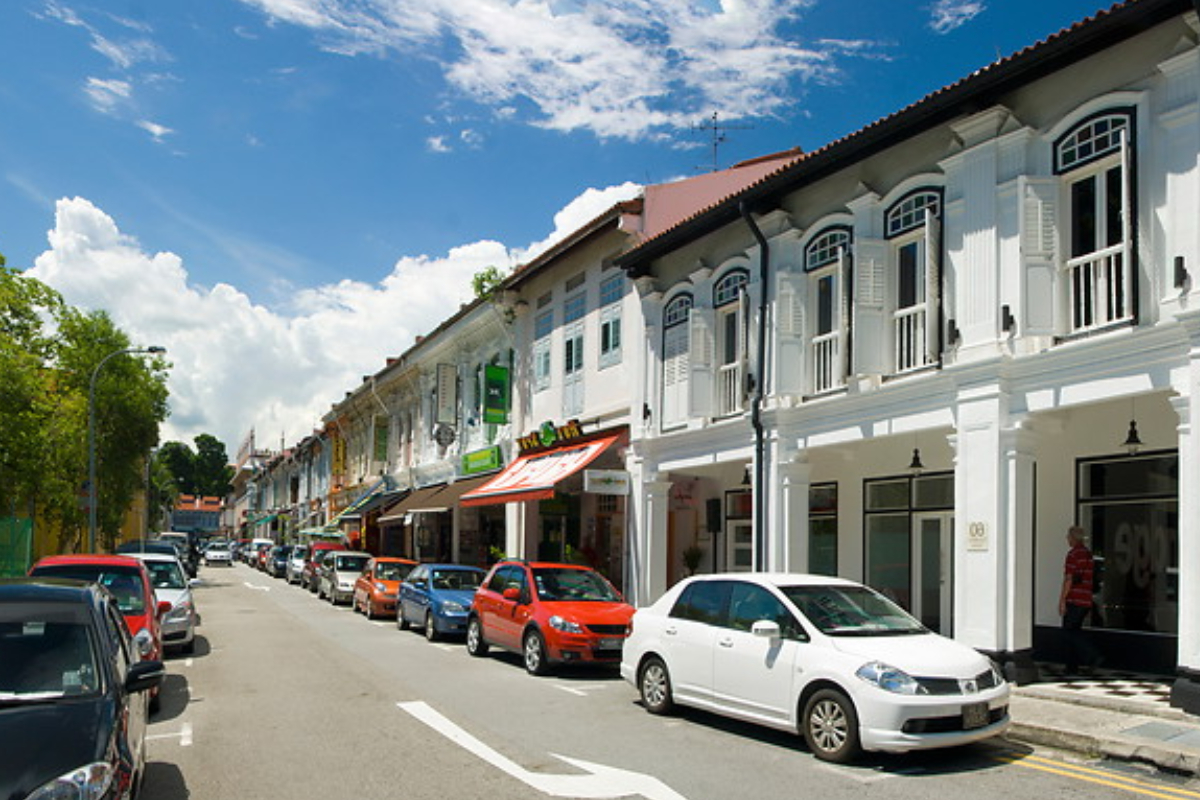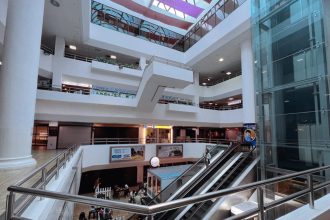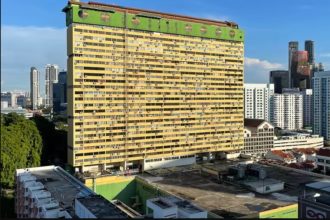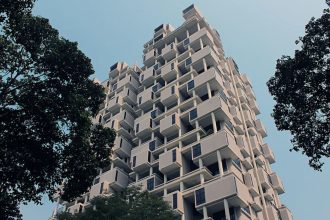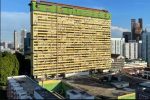Key takeaway
Kandahar Street in Kampong Glam is a living heritage site where late shophouse architecture meets Javanese theatre traditions. Its buildings reflect careful preservation of scale and decorative detail, while its streetscape once hosted performances and community gatherings, making it a tangible record of both architectural and cultural history in Singapore.
Kandahar Street: Where Shophouse Craft Meets Javanese Theatre Heritage
In the heart of Kampong Glam, Kandahar Street captures the layered cultural story of the Malay world, Arab traders, and early Javanese settlers who shaped the district. This street is a unique intersection where architecture, performance, and daily life converge. Narrow lanes, detailed facades, and the echoes of past performances offer a sense of intimacy that larger streets simply cannot replicate.
Walking along Kandahar Street today, you can imagine the bustle of early 20th-century life. Traders and performers once shared the same corridor, and courtyards doubled as spaces for social gatherings. The shophouses, modest yet expressive, form a visual rhythm that tells stories of trade, migration, and creativity in Kampong Glam.
A street shaped by people, performance, and trade
Kandahar Street was once alive with the sounds and movements of daily life. Javanese migrants brought traditional theatre, including wayang wong and ketoprak, and staged performances in open courtyards that spilled onto the street. Children ran between shop entrances, and the air smelled of spices from nearby stalls. The space was multifunctional, accommodating both commerce and culture simultaneously.
The street’s role in the wider Kampong Glam precinct illustrates how art and trade coexist. Neighbouring streets buzzed with artisans, traders, and performers, creating a network of social and cultural interaction. This blend of commerce and cultural expression mirrors other creative corridors, such as the street art in Kampong Glam, where visual storytelling continues to energize the district today.
The architecture that made Kandahar Street iconic
The shophouses along Kandahar Street are modest in scale but rich in detail. Most buildings are two to three storeys high, featuring timber shutters, narrow verandas, and decorative plasterwork. These elements, though restrained, create a cohesive streetscape that allows each shophouse to express subtle differences in style and ownership.
Continuity in height and scale gives the street a harmonious flow. The facades showcase understated craftsmanship; pilasters, floral motifs, and patterned plasterwork hint at the aesthetic preferences of early residents. Compared with other conserved streets like Bukit Pasoh Road, Kandahar Street stands out for its distinctly Malay-Javanese influence, reflecting the cultural identity of its early settlers.
Key Shophouses on Kandahar Street
| Building | Key facts | Nearest MRT | Sources |
|---|---|---|---|
| No. 15 Kandahar Street | 2 storeys, late shophouse architecture, conserved facade | Bugis MRT | Official NHB source |
| No. 23 Kandahar Street | 3 storeys, traditional timber shutters, decorative plasterwork | Bugis MRT | Official NHB source |
| No. 30 Kandahar Street | 2 storeys, plaster motifs, historical shopfronts | Bugis MRT | Official NHB source |
Shophouse Interiors: A Glimpse Inside
The interiors of Kandahar Street’s shophouses reveal how architecture supported daily life and cultural activities. Rooms are arranged linearly, leading from the front shop space to private living quarters and internal courtyards. These courtyards were multifunctional: they hosted family events, impromptu performances, and craft workshops, making the interior space an extension of the street’s social life.
Wooden partitions allowed flexibility, separating residential spaces from commercial areas or performance zones. High ceilings improved ventilation in Singapore’s tropical climate, while natural light filtered in through timber shutters. Visiting these interiors provides insight into how people creatively used space for both livelihood and leisure.
Hidden Courtyards and Community Spaces in Kandahar Street
Many Kandahar Street shophouses have small internal courtyards that are easy to overlook. These courtyards served as flexible spaces for family gatherings, impromptu performances, and even small-scale craft workshops. They provided natural light and ventilation, improving comfort in the tropical climate, while creating intimate pockets for cultural interaction. Residents often used these spaces to socialize with neighbours or rehearse traditional dances, bridging domestic life with community activities. Today, these courtyards continue to offer a sense of discovery, allowing visitors to glimpse private architectural features that embody the street’s multifunctional heritage and creative past.
Craftsmanship and Decorative Elements
Every shophouse on Kandahar Street bears the signature of local artisans. Decorative plaster moldings frame windows and doors, while timber carvings enrich verandas and shutters. Pilasters, floral motifs, and cornices add layers of visual texture, highlighting the careful attention to detail that defines late shophouse architecture.
These elements not only offer aesthetic pleasure but also reflect the socio-economic aspirations of early residents. Subtle variations in motifs or materials show individual tastes and priorities. Walking along the street is like reading a historical record written in wood, plaster, and colour.
Neighbourhood Life and Cultural Exchange in Kandahar Street
Kandahar Street has long been a space for cultural exchange. Javanese, Malay, and Arab communities interacted through trade, theatre, and daily routines. Food, music, and stories crossed cultural boundaries, enriching the district’s social fabric. These interactions fostered a sense of shared identity while celebrating diversity.
Children learned traditional dances, elders exchanged tales of migration, and performers rehearsed in courtyards. This everyday cultural practice created a living archive, one that offers contemporary visitors a glimpse into the vibrant community life of early Kampong Glam.
Street Festivals and Traditional Trade
Kandahar Street historically hosted small-scale festivals and market days that blended commerce with entertainment. Traders sold textiles, spices, and Javanese crafts alongside food stalls, creating a vibrant sensory experience. Performers would stage short plays or musical interludes, drawing crowds from surrounding neighbourhoods. These events strengthened community bonds and preserved cultural practices, such as storytelling and dance. Even today, heritage walks and occasional cultural programs echo this lively past, allowing visitors to appreciate the street not just as a static heritage site but as a space where commerce, performance, and community life intersected organically.
Modern Use and Cultural Programming
Today, Kandahar Street continues to host activities that keep its cultural heritage alive. Heritage tours, workshops, and small-scale performances are staged to engage the public with its history. Local organizations partner with residents to activate spaces that once accommodated traders and performers, preserving both tangible and intangible heritage.
Modern initiatives also explore creative ways to interpret history. Pop-up exhibits, storytelling sessions, and educational programs help younger generations connect with the street’s Javanese theatre roots. These efforts ensure that Kandahar Street remains a site of active cultural engagement, rather than a static historical relic.
Javanese theatre and its lasting cultural footprint
Wayang wong and ketoprak performances once formed the cultural heartbeat of Kandahar Street. These performances were intimate and accessible, set against the backdrop of everyday street life. They allowed communities to participate, learn, and celebrate together, leaving an imprint on Kampong Glam’s cultural memory.
Even as permanent theatres were established elsewhere in Singapore, Kandahar Street’s role as a grassroots performance venue influenced the development of local performing arts. Its contributions resonate with broader theatre histories, including venues like the Capitol Theatre, showing how local streets can incubate creativity.
Preservation, community memory, and what comes next
Conservation of Kandahar Street preserves both architecture and cultural memory. The street demonstrates that heritage is more than bricks and mortar; it encompasses lived experiences, traditions, and community practices. Residents, heritage organizations, and visitors collectively sustain this multidimensional value.
Understanding Singapore’s broader cultural heritage contextualizes Kandahar Street’s significance. Its careful preservation and activation through cultural programming highlight how historical streets can remain relevant and instructive in the modern cityscape.
Keeping the Legacy of Kandahar Street Alive
Kandahar Street shows that heritage is multidimensional, formed by architecture, lived traditions, and the communities who keep them alive. Its theatres, traders, and shophouse owners created a layered memoryscape, and its preservation ensures that these stories remain visible to future generations exploring the heart of Kampong Glam.
The street invites both locals and tourists to experience its unique combination of craftsmanship, culture, and community. Every façade, shutter, and courtyard tells a story, keeping the pulse of Kampong Glam alive in the present.
